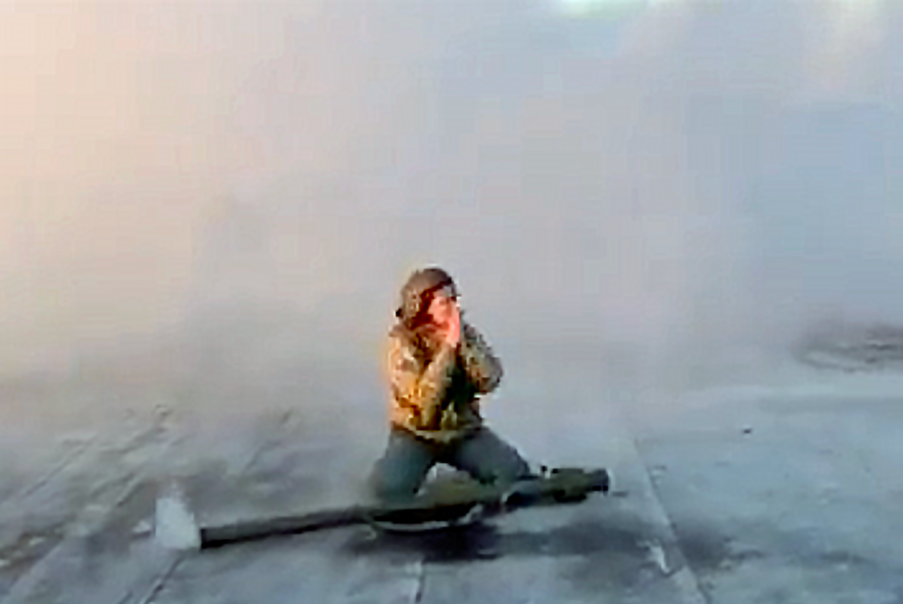On Aug. 1, Poland commemorated the 80th anniversary of the outbreak of the Warsaw Uprising in an event marked by symbolic gestures as well as contemporary political contexts, both domestic and international.
Let’s take a closer look at the significance of this event for us today.
JOIN US ON TELEGRAM
Follow our coverage of the war on the @Kyivpost_official.
The Warsaw Uprising began at 5:00 p.m. on Aug.1, 1944. It occurred a year after the failed Warsaw Ghetto Uprising by the city’s trapped Jews. The Polish underground Home Army (Armia Krajowa), after months of preparation, launched an armed struggle against the German occupiers.
The Warsaw Uprising also had a significant political objective. Soviet forces were approaching the Vistula River. The Home Army’s leadership and the Polish government-in-exile in London aimed to liberate Poland’s capital before the Red Army’s arrival. This was intended to strengthen Poland’s negotiating position – many believed that if Poles freed themselves from German occupation, post-war Poland would not fall under Soviet occupation or Moscow’s sphere of influence.

However, events unfolded differently. After 63 days of fighting, the uprising was crushed, and the Soviet forces stationed on the eastern bank of the Vistula in Warsaw almost passively observed the massacre of the city. In addition to the numerous fallen insurgents, the Germans murdered 150,000 to 200,000 civilians and razed the city to the ground.

US Embassy in Kyiv to Reopen After Threat of Attack
The Soviet army sent units of the Polish People’s Army to assist the insurgents, but the attempt to cross the river and launch an assault ended in a slaughter. This way, Stalin avoided accusations of not aiding the fighting in Warsaw, while simultaneously eliminating the Home Army structures that were hostile to him.
Apology, Forgiveness and War Reparations
On Wednesday, Aug. 1, Frank-Walter Steinmeier, the President of Germany, participated in the commemorative events in Warsaw. He met with veterans of the Warsaw Uprising and asked for their forgiveness. The commemoration of the Warsaw Uprising goes beyond gestures and symbols – it is also a matter of ongoing political discourse.
The current Polish government, led by Donald Tusk, is negotiating with Germany for compensation payments to the roughly 400 surviving veterans of the Warsaw Uprising. This move has faced significant criticism from the Polish public, who reference the war reparations program initiated by the previous Polish ruling coalition, headed by the Law and Justice party (PiS).
The Jan Karski Institute for War Losses was established to assess the damages inflicted by Germany on Poland, which were valued at $1,419,145,000,000. However, few take this astronomical sum seriously. It was intended as a political tool for Poland to exert pressure on Germany and it also had implications in domestic Polish politics.

Nevertheless, the symbolism, the German President’s participation in the ceremonies and the widespread sense of historical and moral closure serve as a good example for Polish-Ukrainian relations. If Kyiv were to follow Berlin’s example and make similar political gestures, the issue of the Volhynia Massacre might not provoke such intense emotions as we currently observe.
However, it’s not the only Ukrainian political context. Returning to the issue of war reparations for Poland, Kyiv Post’s sources in Warsaw suggest that Germany is very cautious about the prospect of potential Russian reparations for Ukraine after the war, precisely because it could serve as a precedent for Poland to demand compensation from Berlin for the losses it suffered due to German aggression and occupation.
Like a Phoenix from the Ashes
When the Germans suppressed the Warsaw Uprising, they massacred the city’s inhabitants and leveled 80 percent of the buildings in Poland’s capital. Today, 80 years later, one can witness a dynamically developing city with restored historical landmarks and modern infrastructure. The devastation of war is well-known in Ukraine, and Polish President Andrzej Duda referred to this.
In his speech on July 30 at the Warsaw Uprising Museum, the Polish president argued that despite the immense destruction and losses, the fight against the occupier was worth it.
Duda drew a parallel to Ukraine’s current struggles: “[Critics of the Warsaw Uprising in Poland] have seen Mariupol over the past two years, practically razed to the ground and ultimately captured by the Russians, with its defenders buried under the rubble, and which the Ukrainians have still not managed to reclaim.”

Duda added: “Let someone try to tell Ukraine today that it wasn’t worth it. Let someone try to tell them today that it wasn’t worth it, even though they lost the city and haven’t regained it yet.”
The comparisons between Warsaw in 1944 and present-day Mariupol are also evident in Kyiv. At the square near St. Michael’s Golden-Domed Monastery, alongside an exhibition of destroyed Russian military equipment captured by Ukrainian defenders, there are photos juxtaposing Warsaw in 1944 with Mariupol after 2022.
The display shows civilian casualties, defenders, barricades and the destruction in both cities.
The analogies are clear. Looking at today’s Warsaw gives Ukrainians hope for reclaiming occupied territories, rebuilding the devastation, modernization and a strong sense of identity and memory.
The views expressed in this article are the author’s and not necessarily those of Kyiv Post.
You can also highlight the text and press Ctrl + Enter






